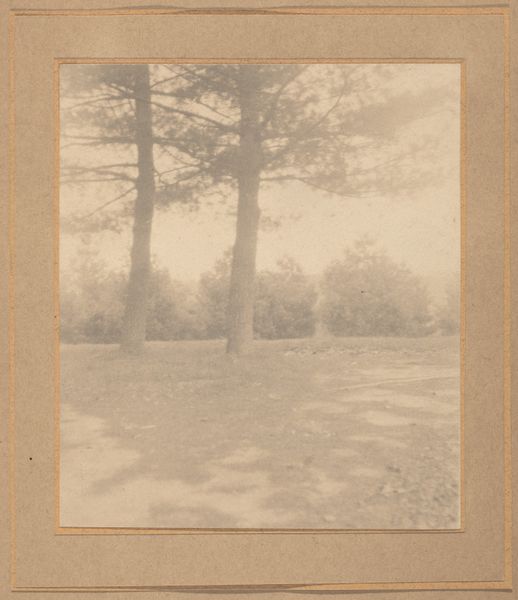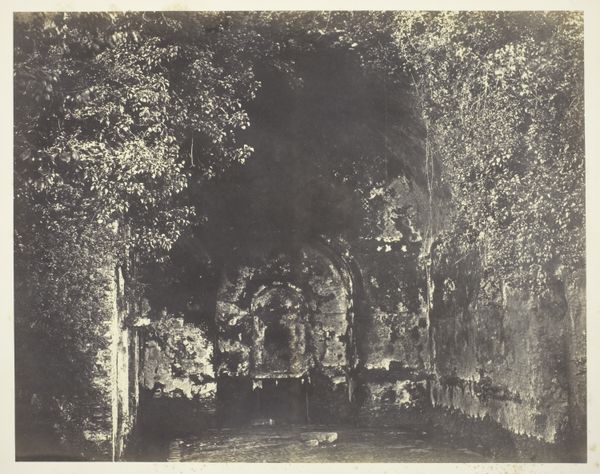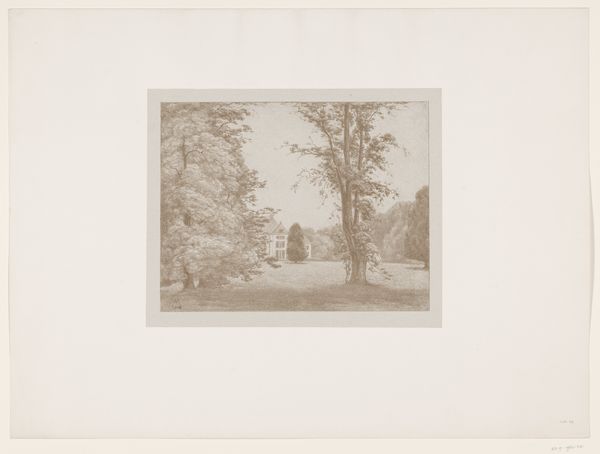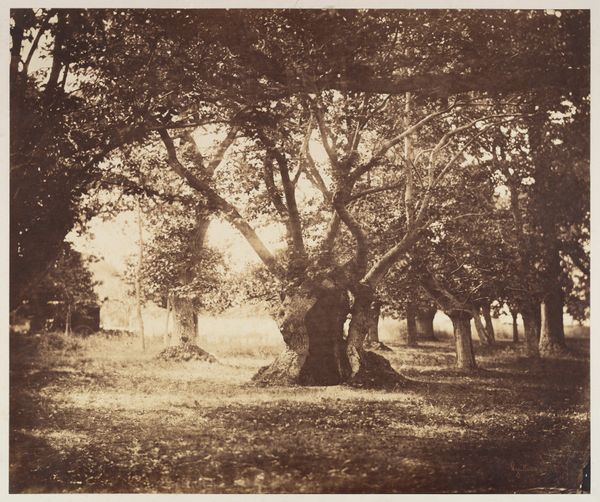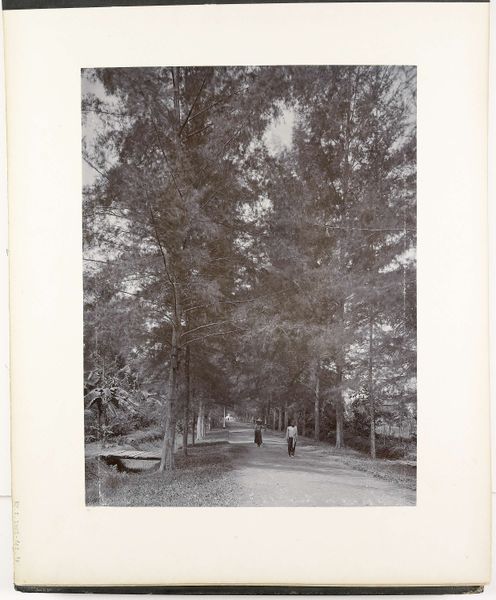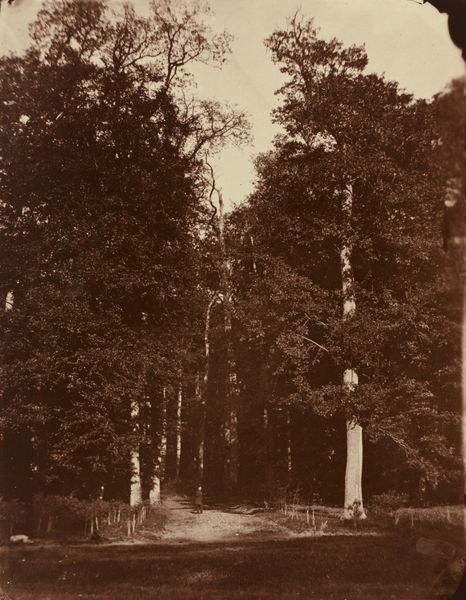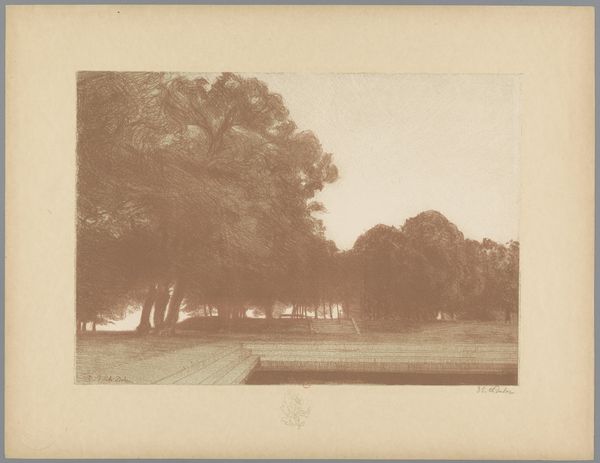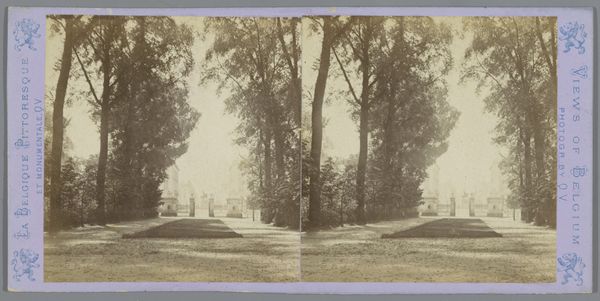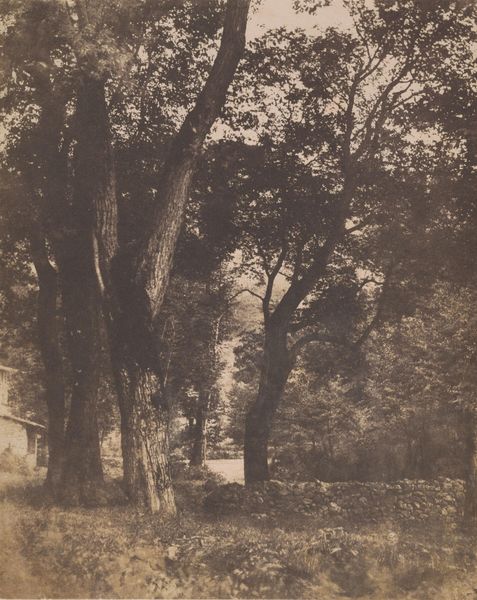![[Gardens of the Château de Saint-Cloud] by Louis-Rémy Robert](/_next/image?url=https%3A%2F%2Fd2w8kbdekdi1gv.cloudfront.net%2FeyJidWNrZXQiOiAiYXJ0ZXJhLWltYWdlcy1idWNrZXQiLCAia2V5IjogImFydHdvcmtzLzdjYzgwZTVjLTI5YzQtNDE1Yi05OTZlLTZjMmEwODQ3MDIyNy83Y2M4MGU1Yy0yOWM0LTQxNWItOTk2ZS02YzJhMDg0NzAyMjdfZnVsbC5qcGciLCAiZWRpdHMiOiB7InJlc2l6ZSI6IHsid2lkdGgiOiAxOTIwLCAiaGVpZ2h0IjogMTkyMCwgImZpdCI6ICJpbnNpZGUifX19&w=3840&q=75)
[Gardens of the Château de Saint-Cloud] 1851 - 1855
0:00
0:00
daguerreotype, photography
#
tree
#
garden
#
landscape
#
daguerreotype
#
photography
#
realism
Dimensions: Sheet: 32.6 x 23.8 cm (12 13/16 x 9 3/8 in.)
Copyright: Public Domain
Editor: So, here we have Louis-Rémy Robert's "[Gardens of the Château de Saint-Cloud]," a daguerreotype from the 1850s. The sepia tones give it this ethereal, almost ghostly feel. The formal garden receding into the distance creates a real sense of depth, but it’s also quite… still. What catches your eye when you look at this piece? Curator: Immediately, the ordered, almost regimented, arrangement of the trees evokes a sense of control. But think about gardens historically – they're never just pretty landscapes. The straight path, those sculpted urns – they signify power, status. What memories of the aristocracy might this image unconsciously carry, even for viewers today? Editor: That makes me see it differently! So it's not just a landscape; it's a symbol of authority. Is the medium, the daguerreotype, significant to this reading? Curator: Absolutely. Early photography like this was expensive, difficult. Its very existence speaks to the affluence of the subject matter. Also, think of the *idea* of capturing something so fleeting – light, shadow, a specific moment in the garden’s history. Photography's indexical nature makes the symbolism all the more potent. What stories might those statues "remember," if they could speak? Editor: I hadn't considered the fleeting nature of photography in that context. So the choice to photograph the gardens in that era makes a statement itself. The rigid order of the landscaping speaks to social hierarchies. Curator: Precisely. And notice how the vanishing point draws your eye, a classic artistic trick but charged here, in this place. Does that long, dark corridor invite or intimidate, do you think? Editor: Initially, I found it a bit ominous, almost like a tunnel. But with what you've shared, I now see it as intentionally imposing. It changes the way I experience the image. Curator: Indeed. By understanding the visual vocabulary and the historical context, we can begin to unravel the deeper cultural meanings embedded within even seemingly straightforward landscapes. Editor: This makes me want to examine other seemingly straightforward pictures, since there is always an artist trying to say something specific for the viewer. I've learned something important today.
Comments
No comments
Be the first to comment and join the conversation on the ultimate creative platform.

